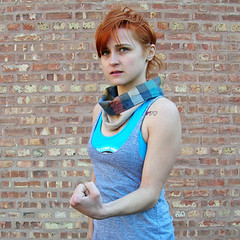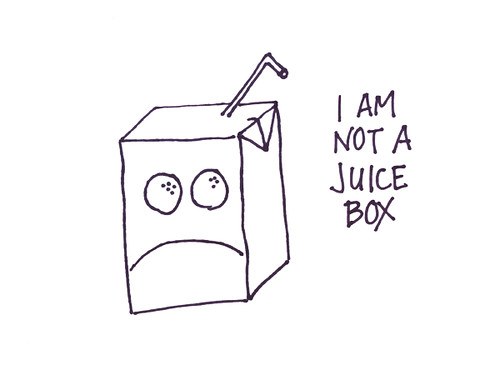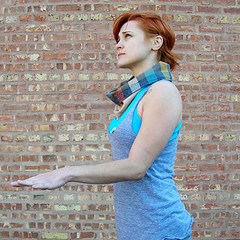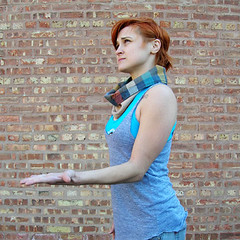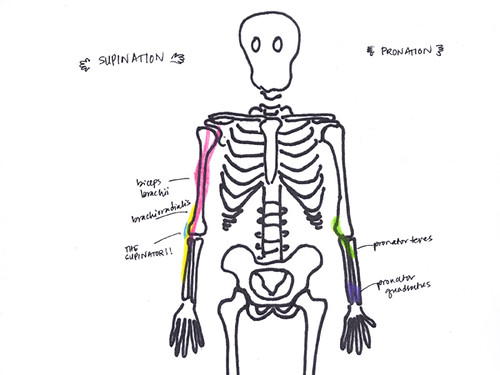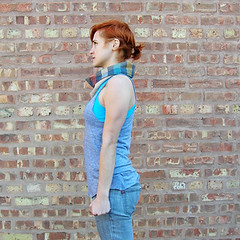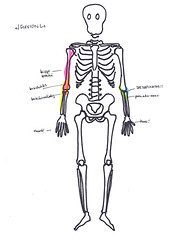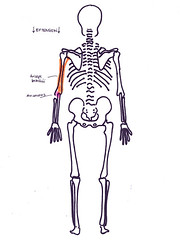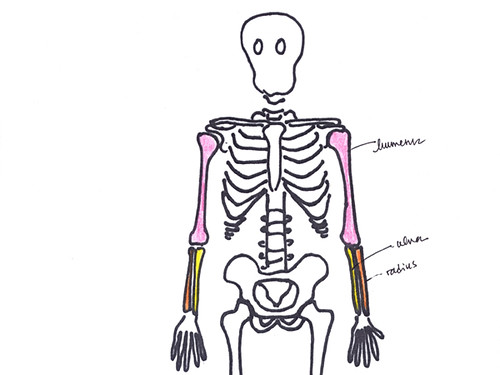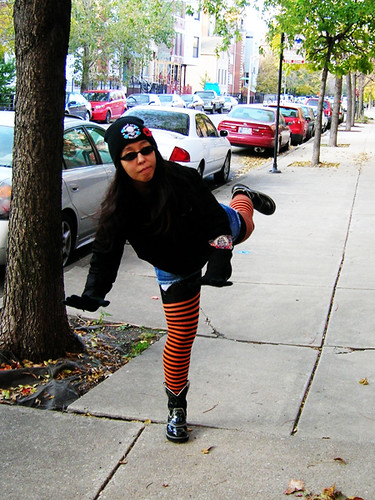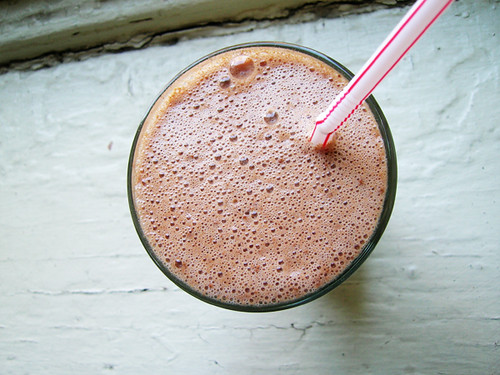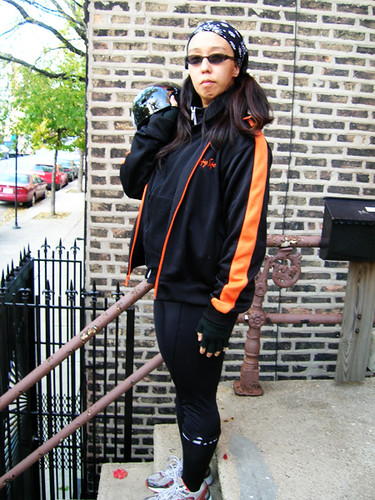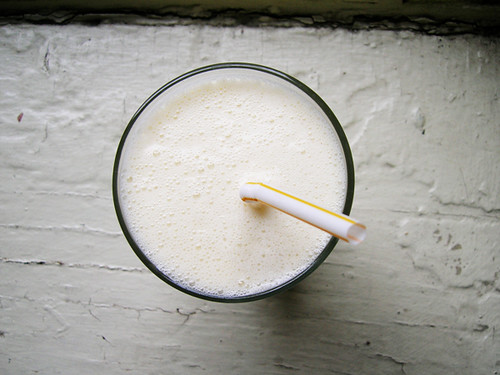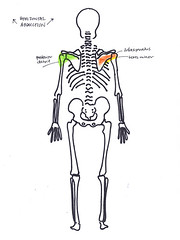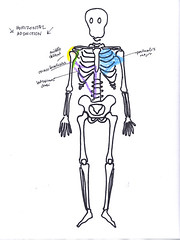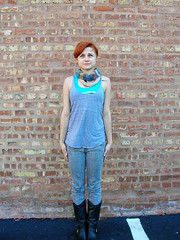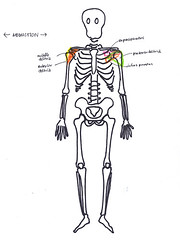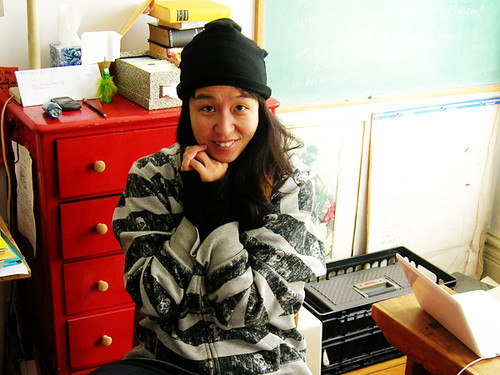Let me introduce you to the rotator cuff muscles, which you can remember by the mnemonic SITS: supraspinatus, infraspinatus, teres minor, and subscapularis. These are the first four muscles I ever learned, I remember thinking at the time that all these muscles were going to be just gibberish; but they actually make sense to me now, which is cool! Your supraspinatus attaches from above and your infraspinatus attaches from below the spine of your shoulder blade to the top outside of the larger knob of your humerus, your teres minor attaches from the upper axillary edge—the edge by your armpit— to the back of the larger knob. (Teres major, by the way, attaches from the lower axillary edge to the bit leading up to the front of the smaller knob.) Subscapularis attaches from the front of the shoulder blade to the front of the smaller knob.
So you can see in your mind that these four muscles basically lash the ball of your arm into the socket of your shoulder blade, and they do a fine job when what you mostly do is swing your arm while walking. I'm going to go so far to say, though, that your shoulder was not really designed to smash people with and really recommend a) don't smash people with your shoulder, and b) I know that you're totally going to smash people with your shoulder and also people are going to smash their shoulders into yours, so you better strengthen your shoulder.
Three out of four of these muscles are involved in internal and external rotation of your arm at the shoulder, so the book recommends internal and external rotation exercises to as rotator cuff exercises. Supraspinatus, however, is primarily involved in abduction, and the other three are involved in adduction and horizontal adduction, so I also recommend abduction and adduction exercises.

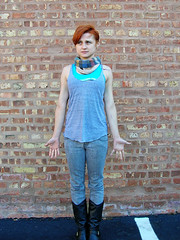
What movements happen at this joint?
Okay so, actual rotation of the arm, as opposed to circumduction, does not involve the arm moving to and from the side, the arm hangs straight and the ball of the arm turns around like Linda Blair in the socket of your shoulder blade. I mean, not all the way around like Linda Blair. Pretty far around though, your shoulder is a mobile mofo of a joint. Internal rotation is when the arm turns, well, in toward the shoulder, so like when you turn your elbow to face front. External rotation is when you turn the inside of your elbow to face front.
Another way to isolate internal and external rotation is to flex your forearm at the elbow and pin your elbow to your side, then pulling your forearm toward your body internally rotates your upper arm at the shoulder and pulling it away from your body externally rotates your upper arm.
What muscles make these movements happen?
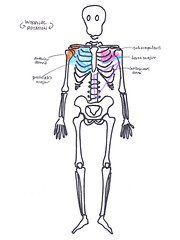
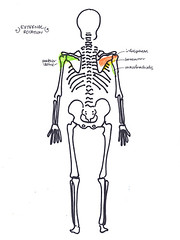
The muscles that internally rotate your upper arm are your subscapularis, anterior deltoid, teres major, pectoralis major and latissimus dorsi. The muscles that externally rotate your upper arm are your infraspinatus, teres minor, posterior deltoid and coracobrachialis. Amongst the rotator cuff muscles, the one in the front pulls the arm toward the front and the two in the back pull the arm back; anterior deltoid and pectoralis major in front pull the arm toward the front, posterior deltoid in back pulls the arm toward the back. All perfectly sensible. Teres major and latissimus dorsi are in back, but they attach to the front of the humerus; so when they contract, the arm internally rotates to the front. Coracobrachialis is in front and attaches to the inside of the humerus, so I don't quite get how that works; but the book says it is only slightly involved in external rotation, so I shan't struggle with that.
What exercises make these muscles work?
As above, going through the motions of internal and external rotation basically exercises these muscles. Rotating the arms, with or without small weights, with arms hanging straight, flexed, abducted, or with forearms flexed and elbows pinned to your sides all work. Tennis serves and baseball pitches also work the rotator cuff, which you probably already know because rotator cuff injuries are so common in those sports.
These are small, easily injured muscles, so I really do mean small weights! Seriously start with two and a half pound weights, or even one pound weights. Also make sure to keep your shoulder girdle muscles stable—i.e., depressed and adducted, pulled down and pinched together in back—when exercising your shoulder muscles to stabilize your shoulder and protect it from injury, which is what your shoulder girdle is for!

